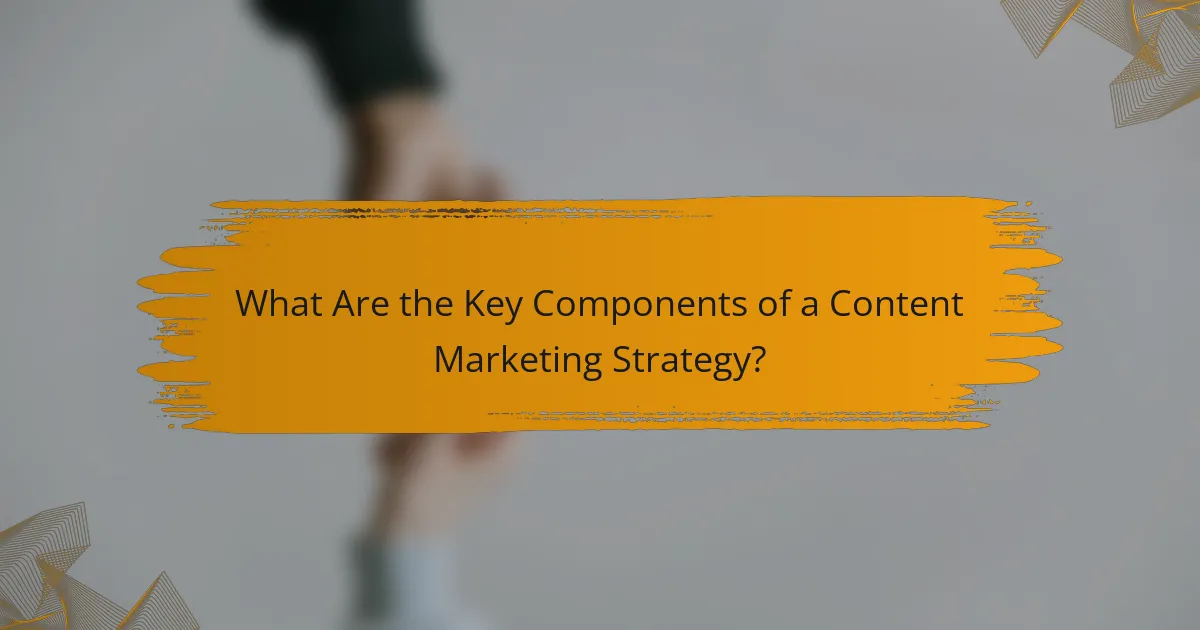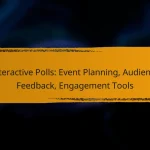Content marketing is a powerful tool for creating buzz and engaging audiences by generating excitement around your brand or product. By strategically utilizing various platforms and fostering meaningful interactions, brands can enhance their connection with target audiences. Effective engagement strategies, coupled with careful measurement of success metrics, allow marketers to refine their approaches and maximize impact.

How to Create Buzz Through Content Marketing?
Creating buzz through content marketing involves generating excitement and interest around your brand or product. This can be achieved by strategically using various platforms and engaging with your audience in meaningful ways.
Utilize Social Media Platforms
Social media platforms are essential for creating buzz as they allow for real-time engagement with your audience. Focus on platforms where your target demographic is most active, such as Instagram, Twitter, or TikTok, and tailor your content to fit each platform’s unique style.
Regularly post engaging content, such as polls, behind-the-scenes glimpses, or interactive stories. Utilize hashtags effectively to increase visibility and encourage sharing among users.
Leverage Influencer Partnerships
Partnering with influencers can amplify your reach and credibility. Choose influencers whose audience aligns with your target market and who genuinely resonate with your brand values.
Collaborate on content that feels authentic, such as product reviews or co-hosted events. This not only creates buzz but also builds trust among potential customers.
Implement Viral Campaigns
Viral campaigns are designed to spread rapidly through sharing. Create content that is entertaining, relatable, or emotionally charged to encourage sharing among users.
Consider using challenges, contests, or unique storytelling to engage users. Ensure that your campaign has a clear call to action, prompting users to share or participate.
Engage with User-Generated Content
User-generated content (UGC) fosters community and authenticity. Encourage your audience to share their experiences with your brand through photos, reviews, or testimonials.
Feature UGC on your platforms to show appreciation and create a sense of belonging among your customers. This not only builds buzz but also enhances brand loyalty.
Optimize for SEO
Search engine optimization (SEO) is crucial for increasing visibility and driving organic traffic. Research relevant keywords and incorporate them naturally into your content to improve search rankings.
Focus on creating high-quality, valuable content that addresses your audience’s needs. Regularly update your content to keep it fresh and relevant, which can help maintain buzz over time.

What Strategies Enhance Audience Engagement?
Effective audience engagement strategies focus on creating meaningful interactions that resonate with your target audience. By leveraging personalized content, interactive formats, regular feedback, and community initiatives, brands can significantly enhance their connection with users.
Personalized Content Experiences
Personalized content experiences tailor messaging and offers to individual preferences, enhancing relevance and engagement. Utilize data analytics to understand user behavior and segment your audience, allowing for customized emails, product recommendations, and targeted ads.
For example, e-commerce platforms often use browsing history to suggest products, which can increase conversion rates by appealing directly to user interests. Aim for a balance between personalization and privacy, ensuring compliance with data protection regulations.
Interactive Content Formats
Interactive content formats, such as quizzes, polls, and surveys, actively involve users, making them more likely to engage. This type of content not only captures attention but also provides valuable insights into audience preferences and opinions.
Consider incorporating interactive elements into your blog posts or social media campaigns. For instance, a quiz that helps users find their ideal product can boost engagement and shareability, leading to increased visibility and interaction.
Regular Feedback Loops
Establishing regular feedback loops allows brands to gather insights directly from their audience, fostering a sense of involvement. Use surveys, comment sections, and social media interactions to solicit opinions and suggestions from users.
Implementing feedback mechanisms can help identify areas for improvement and show your audience that their input is valued. Aim to respond to feedback promptly and transparently, which can enhance trust and loyalty among your audience.
Community Building Initiatives
Community building initiatives create a sense of belonging among your audience, encouraging engagement through shared interests and values. Consider creating forums, social media groups, or hosting events that allow users to connect with each other and your brand.
For example, brands can host webinars or live Q&A sessions to foster interaction and provide value. Building a community not only enhances engagement but also encourages user-generated content, which can further amplify your brand’s reach and authenticity.

How to Measure Content Marketing Success?
Measuring content marketing success involves evaluating various metrics that reflect audience engagement, conversion effectiveness, and overall reach. By analyzing these factors, marketers can determine the effectiveness of their strategies and make informed adjustments.
Track Engagement Metrics
Engagement metrics include likes, comments, shares, and time spent on content. These indicators reveal how well your audience interacts with your material. For example, a blog post with high comments and shares suggests strong interest and relevance.
To effectively track engagement, use tools like Google Analytics or social media insights. Aim for a consistent increase in these metrics over time, as this indicates growing audience interest and loyalty.
Analyze Conversion Rates
Conversion rates measure the percentage of visitors who take a desired action, such as signing up for a newsletter or making a purchase. A higher conversion rate indicates that your content effectively drives users toward your goals.
To analyze conversion rates, set clear objectives for each piece of content and track the actions taken by users. A typical conversion rate for content marketing can range from 1% to 5%, depending on the industry and audience targeting.
Monitor Social Shares and Reach
Social shares and reach reflect how widely your content is distributed across social platforms. High share counts indicate that your content resonates with audiences, while reach shows how many people have seen it.
Utilize social media analytics tools to track these metrics. Aim for a steady increase in shares and reach, as this can enhance brand visibility and attract new audiences. Consider benchmarking against competitors to gauge your performance.
Utilize A/B Testing
A/B testing involves comparing two versions of content to see which performs better. This method helps identify what resonates most with your audience, allowing for data-driven decisions in content strategy.
To implement A/B testing, create two variations of a headline, image, or call-to-action and measure their performance over a set period. Focus on metrics like click-through rates and conversions to determine the winning version, and use these insights to refine future content.

What Are the Key Components of a Content Marketing Strategy?
A successful content marketing strategy includes several vital components that work together to engage audiences and achieve business goals. These components help in defining the target audience, setting clear objectives, choosing distribution channels, and allocating budget effectively.
Define Target Audience
Identifying your target audience is crucial for tailoring content that resonates with them. Consider demographics such as age, gender, location, and interests to create detailed audience personas.
Utilize tools like surveys, social media insights, and website analytics to gather data about your audience’s preferences and behaviors. This information will guide your content creation and ensure it meets their needs.
Set Clear Objectives
Establishing clear objectives is essential for measuring the success of your content marketing efforts. Objectives should be specific, measurable, achievable, relevant, and time-bound (SMART).
Common objectives include increasing brand awareness, generating leads, or boosting customer engagement. Align these goals with your overall business strategy to ensure consistency and focus.
Content Distribution Channels
Selecting the right distribution channels is vital for reaching your target audience effectively. Popular channels include social media platforms, email newsletters, blogs, and video sharing sites.
Consider where your audience spends their time and tailor your content format accordingly. For instance, visual content may perform better on Instagram, while in-depth articles may be more suitable for LinkedIn.
Budget Allocation
Allocating a budget for your content marketing strategy helps prioritize spending on various initiatives. Consider costs associated with content creation, distribution, and promotion.
A typical budget might allocate around 25-40% for content creation, 20-30% for distribution, and the remainder for analytics and tools. Regularly review and adjust your budget based on performance metrics to maximize ROI.


